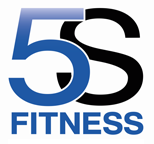Probably the number 1 lift the majority of athletes will be seeking to improve is the back squat. Assistance exercises for the squat warrants an entire article of itself, to address every particular weakness in a muscle group that therefor relates to a breakdown in form. Here I’m just going to give an overall broad brush of exercises that will work for the vast majority, however your weakness is your weakness. It does you no good to train someone elses!
Good Mornings : Often when criticising terrible form in the squat, S+C practitioners will often joke about the squat looking like a good morning. The good morning is an exercise seldom seen in commercial gyms, but should be a main focus for anyone wanting to bulletproof their entire posterior chain and develop transferable strength to the squat. There are many variations, a closer stance will work spinal erectors more with a wider stance putting the strain on the hamstrings, seated variation will take the legs out of it altogether to stop that back from losing tightness and looking like an angry cat!
Unilateral Variation : Unilateral simply means to do the exercise on one leg, as opposed to Bilateral, which is both. All training should encourage some single leg work in order to address any potential imbalances that may arise, it is also less draining on the CNS due to the fact you clearly wont be able to handle to same weight on one leg that you can on two. The stability factor also challenges our proprioception, thus making our core work harder then it would otherwise. This doesn’t mean you do crazy circus stunts with swiss balls, its dangerous and simply not required. Pistol squats, bodyweight then weighted, split squats, both normal and elevated, lunges and their many variations are all strong examples of unilateral work.
Squat Variations : This one should be obvious, but to many it isn’t. When training we have to avoid the law of accommodation. Our bodies are massively efficient at making hard work easier, therefor we, within reason, need to keep our body in a state of shock in order to grow. Squat variations will address different weak points within the squat to help improve the main lift. There’s several mechanical variations for the back squat; High bar, Low bar, Narrow stance, Medium Stance, Wide Stance, Quarter Depth, Half Depth, Full Depth. On top of that we can change the squat itself; Powerlifting Style, Olympic Style, Front Squat, Zercher Squat, Anderson Squats etc…
There you have a general insight into the world of assistance exercises for the squat. All those variations on top of actual loading, such as Tempo’s, 1 and 1/4 rep schemes, Negatives, Concentric drives and so on should give one more than enough tools in the box to break through plateaus. Don’t forget heavy core work and don’t overlook machines aswell, this will keep the muscles strong that support the movement.
